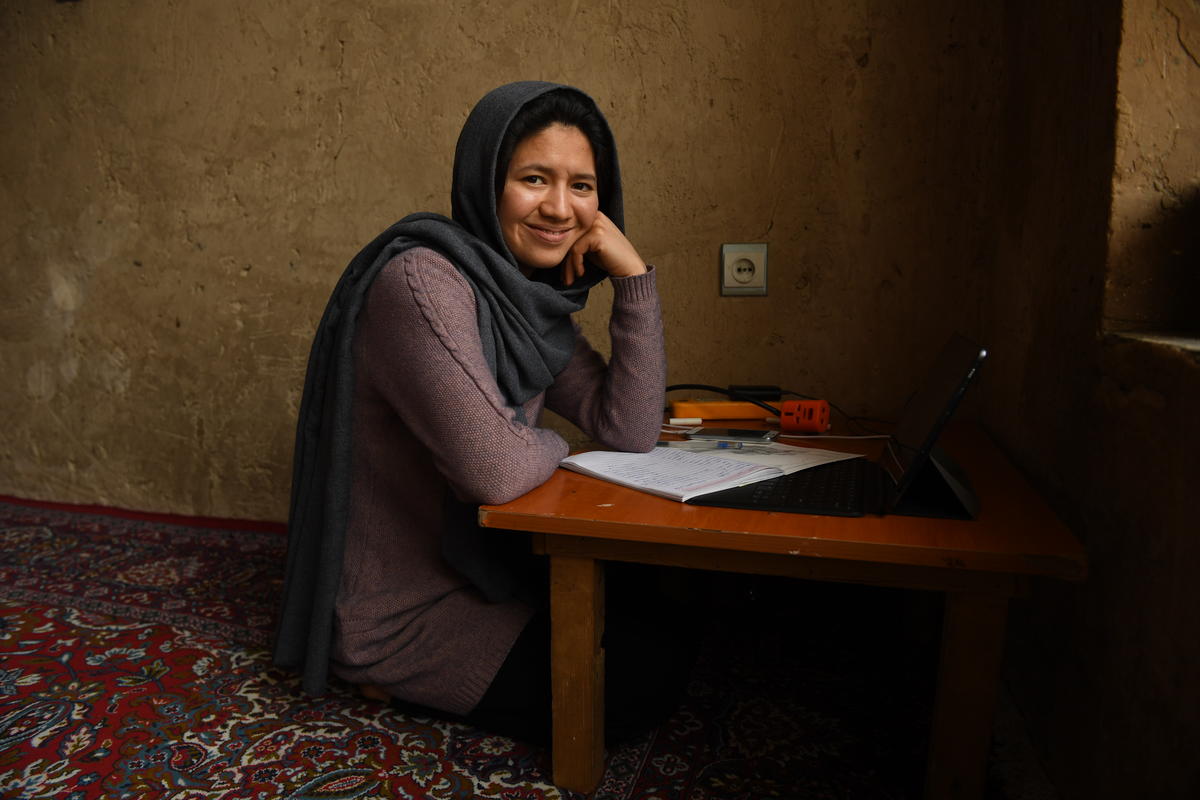CERN and UNHCR webcast to focus on Einstein the refugee, as well as on E=mc2
CERN and UNHCR webcast to focus on Einstein the refugee, as well as on E=mc2
GENEVA, November 30 (UNHCR) - There is a famous photograph of Albert Einstein writing an equation on a blackboard. But a rather less well-known fact about the world's most famous scientist and Nobel prize-winner was that he saw a different sort of writing on the wall in the early 1930s, which caused him to leave Germany and become a refugee in the United States.
On 1 December, the European Organization for Nuclear Research (CERN) is organizing a special webcast on Einstein and his Theory of Relativity as part of the World Year of Physics, involving partners from all over the world, including museums, schools, scientific laboratories, UNHCR and the general public.
The webcast, which is scheduled to last for a mammoth 12 hours - which may be a world record for a webcast - will contain a 40-minute slot devoted to Einstein as a refugee. This session, entitled "Refugees have a lot to give. Einstein was a refugee," will include a video address by UN High Commissioner for Refugees António Guterres focusing on the positive contributions refugees can make to societies which give them a new home.
Einstein the refugee
Adolf Hitler became Chancellor of Germany on January 30, 1933.
Einstein, who was Jewish and a renowned pacifist, immediately spoke out in California, which he was visiting at the time, saying he would not return to Germany, while it was run by a regime that did not recognize political freedom, equality and tolerance.
In March 1933, he returned to Europe and initially went to stay in Belgium, where he visited his home country's embassy to renounce his German citizenship. He also resigned from his position at the Prussian Academy of Sciences in Berlin. In Germany, the Nazis reacted by sending stormtroopers to ransack his house. They also confiscated some of his possessions, including his bank accounts. His books were burned in public squares, and he was subsequently accused of treason by the Academy of Sciences. When some of his fellow-non-Jewish-German scientists tried to intercede on his behalf, they were threatened with internment.
In April, the Nazis' first racial law came into effect: Jews, Germans married to Jews, homosexuals and people opposed to the Reich were all barred from public office. The writing on the wall was clear. Einstein continued to speak out - even going so far as to ditch his pacifism and call on other European countries to re-arm in order to confront the Nazi menace - but there was no future for him in Germany, and even in Belgium there were fears that he would be assassinated.
He left for the United States, where he took up a post at Princeton University. In the process, he became the world's most famous refugee as well as its most celebrated scientist. During the rest of the 1930s and right up through World War II, Einstein continued to use his fame to campaign on behalf of other German Jews trying to escape from Europe.
In Thursday's live presentation from CERN's futuristic building, known as the Globe of Science and Innovation, various participants will present the UNHCR's Albert Einstein Fund (known as DAFI) which is funded by the German government and provides a number of scholarships for refugees at the tertiary level in universities and polytechnics.
Testimonials from former DAFI beneficiaries will include a physics professor from Ghana and a Liberian refugee who gained a physics degree with the help of a DAFI scholarship. There will also be a short Question and Answer session, in which the general public can participate.
UNHCR staff will also be manning a stand at the Globe of Science and Innovation, providing information to the many students and other visitors present during the 12-hour marathon event.








